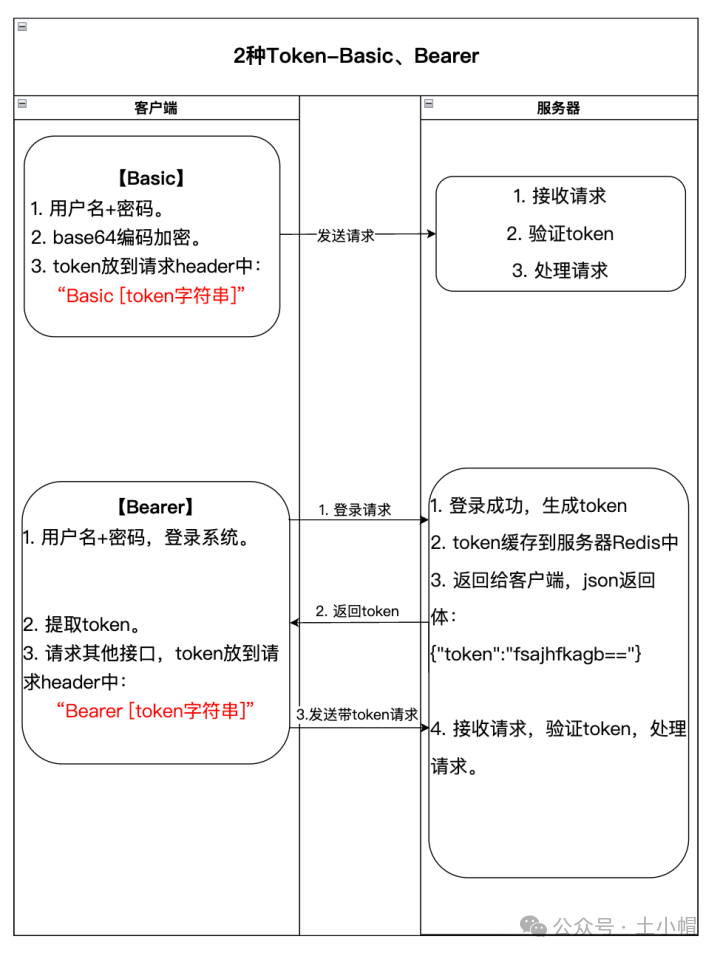1.unordered系列关联式容器
在C++98中,STL提供了底层为红黑树结构的一系列关联式容器,在查询时效率可达到,即最差情况下需要比较红黑树的高度次,当树中的节点非常多时,查询效率也不理想。最好的查询是,进行很少的比较次数就能够将元素找到,在C++11中,STL又提供了4个unordered系列的关联式容器:unordered_map、unordered_set、unordered_multimap、unordered_multiset,这四个容器与红黑树结构的关联式容器使用方式基本类似,只是其底层结构不同,本文中只对unordered_map和unordered_set进行介绍。
2. 底层结构
unordered系列容器使用了哈希结构,提高了查找效率
2.1 哈希
顺序结构以及平衡树中,元素关键码key与其存储位置之间没有对应的关系,因此在查找一个元素时,必须要经过关键码的多次比较。顺序查找时间复杂度为O(N),平衡树中为树的高度,即O(),搜索的效率取决于搜索过程中元素的比较次数
理想的搜索方法:可以不经过任何比较,一次直接从表中得到要搜索的元素。
如果构造一种存储结构,通过某种函数(hashFunc--哈希函数)使元素的存储位置与它的关键码之间能够建立一一映射的关系,那么在查找时通过该函数可以很快找到该元素
2.2 哈希方法/散列方法
插入元素:根据插入的关键码,通过哈希函数计算出该元素的存储位置并按此位置进行存放
搜索元素:对元素的关键码进行同样的计算,把求得的函数值当做元素的存储位置,在结构中按此位置取元素比较,若关键码相等,则搜索成功
该方式即为哈希(散列)方法,哈希方法中使用的转换函数称为哈希(散列)函数,构造出来的结构称
为哈希表(Hash Table)(或者称散列表)
例如:插入数据集合{ 1,7,6,4,5,9 }
哈希函数设置为:hash(key) = key % capacity; capacity为存储元素底层空间总的大小
2.3 哈希冲突/哈希碰撞
2.2的例子中,若key==55,通过哈希函数计算出5,与key==5的情况冲突,即不同key通过相同哈希函数计算出来相同的哈希地址,该现象称为哈希冲突/哈希碰撞。把具有不同关键码而具有相同哈希地址的数据元素称为“同义词”。
处理哈希冲突的方法:哈希函数的设计
哈希函数的设计原则:
哈希函数的定义域必须包括需要存储的全部关键码,而如果哈希表允许有m个地址时,其值域必须在0到m-1之间
哈希函数计算出来的地址能均匀分布在整个空间中
哈希函数应该比较简单
常见哈希函数:
1. 直接定址法(常用):
取关键字的某个线性函数为哈希地址:Hash(Key)= A*Key + B
优点:简单、均匀
缺点:需要事先知道关键字的分布情况
使用场景:适合查找比较小且连续的情况
2.除留余数法(常用):
设哈希表中允许的地址数为m,取一个不大于m,但最接近或者等于m的质数p作为除数,按照哈希函数:Hash(key) = key% p(p<=m),将关键码转换成哈希地址
3.平方取中法:
假设关键字为1234,对它平方就是1522756,抽取中间的3位227作为哈希地址;
再比如关键字为4321,对它平方就是18671041,抽取中间的3位671(或710)作为哈希地址
平方取中法比较适合:不知道关键字的分布,而位数又不是很大的情况
4.折叠法:
折叠法是将关键字从左到右分割成位数相等的几部分(最后一部分位数可以短些),然后将这几部分叠加求和,并按哈希表表长,取后几位作为哈希地址
5. 随机数法:
选择一个随机函数,取关键字的随机函数值为它的哈希地址,即H(key) = random(key),其中random为随机数函数。
6.数学分析法:
设有n个d位数,每一位可能有r种不同的符号,这r种不同的符号在各位上出现的频率不一定相同,可能在某些位上分布比较均匀,每种符号出现的机会均等,在某些位上分布不均匀只有某几种符号经常出现。可根据哈希表的大小,选择其中各种符号分布均匀的若干位作为哈希地址。
例如:
假设要存储某家公司员工登记表,如果用手机号作为关键字,那么极有可能前7位都是 相同的,那么我们可以选择后面的四位作为散列地址,如果这样的抽取工作还容易出现 冲突,还可以对抽取出来的数字进行反转(如1234改成4321)、右环位移(如1234改成4123)、左环移位、前两数与后两数叠加(如1234改成12+34=46)等方法

数学分析法通常适合处理关键字位数比较大的情况,事先知道关键字的分布且关键字的若干位分布较均匀的情况
注意:哈希函数设计的越精妙,产生哈希冲突的可能性就越低,但是无法避免哈希冲突
2.4 处理哈希冲突
解决哈希冲突两种常见的方法是:闭散列和开散列
2.4.1 闭散列/开放寻址法
当发生哈希冲突时,如果哈希表未被装满,说明在哈希表中必然还有空位置,那么可以把key存放到冲突位置中的“下一个” 空位置中去,通过线性探测来查找下一个位置。
插入:2.2的例子中插入55,通过哈希函数计算得出5,从5开始向后探测,直到寻找到下一个空位置并插入,线性探测即从发生冲突的位置开始,依次向后探测,直到寻找到下一个空位置为止。
删除:采用闭散列处理哈希冲突时,不能随便物理删除哈希表中已有的元素,若直接删除元素会影响其他元素的搜索。比如删除元素5,如果直接删除掉,55查找起来可能会受影响。因此线性探测采用标记的伪删除法来删除一个元素。
哈希表扩容:
实现:
#include <iostream>
#include <vector>
#include <string>
#include <list>
#include <unordered_map>
#include <unordered_set>
#include <cassert>
#include <algorithm>
using namespace std;
namespace open_address
{
//哈希函数
template <class K>
struct HashFunc
{
size_t operator()(const K& key)
{
return (size_t)key;
}
};
//特化string
template<>
struct HashFunc<string>
{
size_t operator()(const string& key)
{
size_t hash = 0;
for (auto e : key)
{
//降低冲突概率
hash *= 31;
hash += e;
}
return hash;
}
};
//状态
enum State
{
EXIST,EMPTY,DELETE
};
//数据
template <class K, class V>
struct HashData
{
pair<K, V> _kv;
State _state = EMPTY;
};
template <class K, class V, class Hash = HashFunc<K>>
class HashTable
{
public:
HashTable()
:_n(0)
{
//初始化为10个
_tables.resize(10);
}
HashData<K, V>* Find(const K& key)
{
Hash hs;
size_t hashi = hs(key) % _tables.size();
while (_tables[hashi]._state != EMPTY)
{
if (_tables[hashi]._state == EXIST && _tables[hashi]._kv.first == key)
{
return &_tables[hashi];
}
++hashi;
hashi %= _tables.size();
}
//找不到返回nullptr
return nullptr;
}
bool Insert(const pair<K, V>& kv)
{
//已存在就不用插入了
if (Find(kv.first))
return false;
//扩容--载荷因子 == 0.7
//载荷因子 = 表中元素个数 / 表的长度
if (_n * 10 / _tables.size() >= 7)
{
HashTable<K, V, Hash> newHT;
//扩容--扩为原来的两倍
newHT._tables.resize(2 * _tables.size());
for (size_t i = 0; i < _tables.size(); i++)
{
if(_tables[i]._state == EXIST)
{
newHT.Insert(_tables[i]._kv);
}
}
//出作用域析构
_tables.swap(newHT._tables);
}
//仿函数
Hash hs;
size_t hashi = hs(kv.first) % _tables.size();
while (_tables[hashi]._state == EXIST)
{
++hashi;
//超过表长回到开头继续向后找,因为载荷因子所以不会导致死循环
hashi %= _tables.size();
}
_tables[hashi]._kv = kv;
_tables[hashi]._state = EXIST;
++_n;
return true;
}
bool Erase(const K& key)
{
HashData<K, V>* ret = Find(key);
if (ret == nullptr)
return false;
else
{
//虚删除
ret->_state = DELETE;
return true;
}
}
private:
vector<HashData<K, V>> _tables;
size_t _n ;//表中存储数据个数
};
}线性探测优点:实现简单
线性探测缺点:一旦发生哈希冲突,所有的冲突连在一起,容易产生数据“堆积”,即:不同关键码占据了可利用的空位置,使得寻找某关键码的位置需要许多次比较,导致搜索效率降低。
二次探测:线性探测的缺陷是产生冲突的数据堆积在一块,这与其找下一个空位置有关系,因为找空位置的方式就是挨着往后逐个去找,因此二次探测为了避免该问题,找下一个空位置的方法为: 或者:
或者: 。其中:i =1,2,3…,
。其中:i =1,2,3…, 是通过哈希函数Hash(x)对元素的关键码 key 进行计算得到的位置,m是表的大小。
研究表明:当表的长度为质数且表装载因子a不超过0.5时,新的元素一定能够插入,而且任何一个位置都不会被探查两次。因此只要表中有一半的空位置,就不会存在表满的问题。在搜索时可以不考虑表装满的情况,但在插入时必须确保表的装载因子a不超过0.5,如果超出必须考虑增容。这也导致哈希的最大缺陷就是空间利用率比较低,这也是哈希的缺陷。
2.4.2 开散列/拉链法
开散列法又叫链地址法(拉链法),首先对关键码集合用哈希函数计算哈希地址,具有相同地址的关键码归于同一子集合,每一个子集合称为一个桶,各个桶中的元素通过一个单链表链接起来,各链表的头结点存储在哈希表中。

开散列中每个桶中放的都是发生哈希冲突的元素。
实现:
namespace hash_bucket
{
template<class K>
struct HashFunc
{
size_t operator()(const K& key)
{
return (size_t)key;
}
};
template<>
struct HashFunc<string>
{
size_t operator()(const string& key)
{
size_t hash = 0;
for (auto e : key)
{
hash *= 31;
hash += e;
}
return hash;
}
};
template <class K, class V>
struct HashNode
{
pair<K, V> _kv;
HashNode<K, V>* _next;
HashNode(const pair<K,V>& kv)
:_kv(kv), _next(nullptr)
{}
};
template<class K, class V, class Hash = HashFunc<K>>
class HashTable
{
typedef HashNode<K, V> Node;
public:
HashTable()
:_n(0)
{
_tables.resize(10, nullptr);
}
~HashTable()
{
for (size_t i = 0; i < _tables.size(); i++)
{
Node* cur = _tables[i];
while (cur)
{
//提前存好下一个节点
Node* next = cur->_next;
delete cur;
cur = next;
}
_tables[i] = nullptr;
}
}
bool Insert(const pair<K, V>& kv)
{
Hash hs;
size_t hashi = hs(kv.first) % _tables.size();
//负载因子 == 1时就扩容
if (_n == _tables.size())
{
vector<Node*> newTables(2 * _tables.size(), nullptr);
for (size_t i = 0; i < _tables.size(); i++)
{
Node* cur = _tables[i];
while (cur)
{
//直接将本体转移过去
Node* next = cur->_next;
size_t hashi = hs(cur->_kv.first) % newTables.size();
cur->_next = newTables[hashi];
newTables[hashi] = cur;
//下一个
cur = next;
}
_tables[i] = nullptr;
}
_tables.swap(newTables);
}
//插入--头插
Node* newNode = new Node(kv);
newNode->_next = _tables[hashi];
_tables[hashi] = newNode;
++_n;
return true;
}
Node* Find(const K& key)
{
Hash hs;
size_t hashi = hs(key) % _tables.size();
Node* cur = _tables[hashi];
while (cur)
{
if (cur->_kv.first == key)
return cur;
cur = cur->_next;
}
//找无
return nullptr;
}
bool Erase(const K& key)
{
Hash hs;
size_t hashi = hs(key) % _tables.size();
Node* prev = nullptr;
Node* cur = _tables[hashi];
while (cur)
{
if (cur->_kv.first == key)
{
if (prev == nullptr)
_tables[hashi] = cur->_next;
else
prev->_next = cur->_next;
delete cur;
--_n;
return true;
}
prev = cur;
cur = cur->_next;
}
return false;
}
private:
vector<Node*> _tables;
size_t _n;
};
}开散列的增容:桶的个数是一定的,随着元素的不断插入,每个桶中元素的个数不断增多,极端情况下,可能会导致一个桶中链表节点非常多,会影响的哈希表的性能,因此在一定条件下需要对哈希表进行增容,那该条件怎么确认呢?开散列最好的情况是:每个哈希桶中刚好挂一个节点,再继续插入元素时,每一次都会发生哈希冲突,因此,在元素个数刚好等于桶的个数时,可以给哈希表增容。
2.4.3 开散列与闭散列比较
应用链地址法处理溢出,需要增设链接指针,似乎增加了存储开销。事实上:
由于开地址法必须保持大量的空闲空间以确保搜索效率,如二次探查法要求装载因子a <=0.7,而表项所占空间又比指针大的多,所以使用链地址法反而比开地址法节省存储空间。
3. unordered_set 和 unordered_map的部分模拟实现
//HashTable.h
#pragma once
#include <iostream>
#include <vector>
#include <string>
#include <list>
#include <unordered_map>
#include <unordered_set>
#include <cassert>
#include <algorithm>
using namespace std;
template<class K>
struct HashFunc
{
//仿函数
size_t operator()(const K& key)
{
//转化为整型
return (size_t)key;
}
};
// 特化--string
template<>
struct HashFunc<string>
{
size_t operator()(const string& key)
{
//将字符串每个字符的ASCII相加
size_t hash = 0;
for (auto e : key)
{
hash *= 31;
hash += e;
}
return hash;
}
};
namespace hash_bucket
{
//T -> key / pair<key, value>
template <class T>
struct HashNode
{
T _data;
HashNode<T>* _next;
HashNode(const T& data)
:_data(data), _next(nullptr)
{}
};
//声明
template<class K, class T, class KeyOfT, class Hash>
class HashTable;
template <class K, class T, class Ptr, class Ref, class KeyOfT, class Hash>
struct HTIterator
{
typedef HashNode<T> Node;
typedef HTIterator<K, T, Ptr, Ref, KeyOfT, Hash> Self;
//当前Iterator指向节点
Node* _node;
const HashTable<K,T, KeyOfT, Hash>* _pht;
//传HashTable指针来取哈希桶
HTIterator(Node* node, const HashTable<K, T, KeyOfT, Hash>* pht)
:_node(node), _pht(pht)
{}
Ref operator*()
{
return _node->_data;
}
Ptr operator->()
{
return &_node->_data;
}
bool operator !=(const Self& s)
{
return _node != s._node;
}
Self& operator++()
{
//下一位不是空--指向下一位
if (_node->_next)
_node = _node->_next;
else
{
//下一位不是空--指向下一个桶(存在数据)
KeyOfT kot;
Hash sh;
size_t hashi = sh(kot(_node->_data)) % _pht->_tables.size();
++hashi;//下一个桶
while (hashi < _pht->_tables.size())
{
//知道下一个桶不为空
if (_pht->_tables[hashi])
break;
++hashi;
}
//整个表走完了
if (hashi == _pht->_tables.size())
_node = nullptr;
else
_node = _pht->_tables[hashi];
}
return *this;
}
};
template<class K, class T, class KeyOfT, class Hash>
class HashTable
{
//模板声明--需要模板参数
template <class K, class T, class Ptr, class Ref, class KeyOfT, class Hash>
friend struct HTIterator;
typedef HashNode<T> Node;
public:
typedef HTIterator<K, T, T*, T&, KeyOfT, Hash> Iterator;
typedef HTIterator<K, T, const T*, const T&, KeyOfT, Hash> ConstIterator;
//迭代器
Iterator Begin()
{
//空表
if (_n == 0)
return End();
//不是空表
for (size_t i = 0; i < _tables.size(); i++)
{
Node* cur = _tables[i];
if (cur)
return Iterator(cur, this);
}
return End();
}
Iterator End()
{
return Iterator(nullptr, this);
}
ConstIterator Begin() const
{
//空表
if (_n == 0)
return End();
//不是空表
for (size_t i = 0; i < _tables.size(); i++)
{
Node* cur = _tables[i];
if (cur)
return ConstIterator(cur, this);
}
return End();
}
ConstIterator End() const
{
return ConstIterator(nullptr, this);
}
//INIT
HashTable()
:_n(0)
{
_tables.resize(10, nullptr);
}
~HashTable()
{
for (size_t i = 0; i < _tables.size(); i++)
{
Node* cur = _tables[i];
while (cur)
{
//提前存好下一个节点
Node* next = cur->_next;
delete cur;
cur = next;
}
_tables[i] = nullptr;
}
}
pair<Iterator, bool> Insert(const T& data)
{
//查重
KeyOfT kot;
Iterator it = Find(kot(data));
if (it != End())
return make_pair(it, false);
Hash hs;
size_t hashi = hs(kot(data)) % _tables.size();
//负载因子 == 1时就扩容
if (_n == _tables.size())
{
vector<Node*> newTables(2 * _tables.size(), nullptr);
for (size_t i = 0; i < _tables.size(); i++)
{
Node* cur = _tables[i];
while (cur)
{
//直接将本体转移过去
Node* next = cur->_next;
size_t hashi = hs(kot(cur->_data)) % newTables.size();
cur->_next = newTables[hashi];
newTables[hashi] = cur;
//下一个
cur = next;
}
_tables[i] = nullptr;
}
_tables.swap(newTables);
}
//插入--头插
Node* newNode = new Node(data);
newNode->_next = _tables[hashi];
_tables[hashi] = newNode;
++_n;
return make_pair(Iterator(newNode,this), true);
}
Iterator Find(const K& key)
{
KeyOfT kot;
Hash hs;
size_t hashi = hs(key) % _tables.size();
Node* cur = _tables[hashi];
while (cur)
{
if (kot(cur->_data) == key)
return Iterator(cur, this);
cur = cur->_next;
}
//找无
return End();
}
bool Erase(const K& key)
{
KeyOfT kot;
Hash hs;
size_t hashi = hs(key) % _tables.size();
Node* prev = nullptr;
Node* cur = _tables[hashi];
while (cur)
{
if (kot(cur->_data) == key)
{
if (prev == nullptr)
_tables[hashi] = cur->_next;
else
prev->_next = cur->_next;
delete cur;
--_n;
return true;
}
prev = cur;
cur = cur->_next;
}
return false;
}
private:
vector<Node*> _tables;
size_t _n;
};
}
//unordered_set.h
#pragma once
#include "HashTable.h"
namespace MYunordered_set
{
template <class K, class Hash = HashFunc<K>>
class unordered_set
{
struct SetKeyOfT
{
const K& operator()(const K & key)
{
return key;
}
};
public:
typedef typename hash_bucket::HashTable<K, const K, SetKeyOfT, Hash>::Iterator iterator;
typedef typename hash_bucket::HashTable<K, const K, SetKeyOfT, Hash>::ConstIterator const_iterator;
iterator begin()
{
return _ht.Begin();
}
iterator end()
{
return _ht.End();
}
const_iterator begin() const
{
return _ht.Begin();
}
const_iterator end() const
{
return _ht.End();
}
pair<iterator, bool> insert(const K& key)
{
return _ht.Insert(key);
}
iterator find(const K& key)
{
return _ht.Find(key);
}
bool erase(const K& key)
{
return _ht.Erase(key);
}
private:
hash_bucket::HashTable<K, const K, SetKeyOfT, Hash> _ht;
};
}
//unordered_map
#pragma once
#include "HashTable.h"
namespace MYunordered_map
{
template <class K, class V, class Hash = HashFunc<K>>
class unordered_map
{
struct MapKeyOfT
{
const K& operator()(const pair<K, V>& kv)
{
return kv.first;
}
};
public:
typedef typename hash_bucket::HashTable<K, pair<const K, V>, MapKeyOfT, Hash>::Iterator iterator;
typedef typename hash_bucket::HashTable<K, pair<const K, V>, MapKeyOfT, Hash>::ConstIterator const_iterator;
iterator begin()
{
return _ht.Begin();
}
iterator end()
{
return _ht.End();
}
const_iterator begin() const
{
return _ht.Begin();
}
const_iterator end() const
{
return _ht.End();
}
pair<iterator, bool> insert(const pair<K, V>& kv)
{
return _ht.Insert(kv);
}
V& operator[](const K& key)
{
pair<iterator, bool> ret = _ht.Insert(make_pair(key, V()));
return ret.first->second;
}
iterator find(const K& key)
{
return _ht.Find(key);
}
bool erase(const K& key)
{
return _ht.Erase(key);
}
private:
hash_bucket::HashTable<K, pair<const K, V>, MapKeyOfT, Hash> _ht;
};
}

















